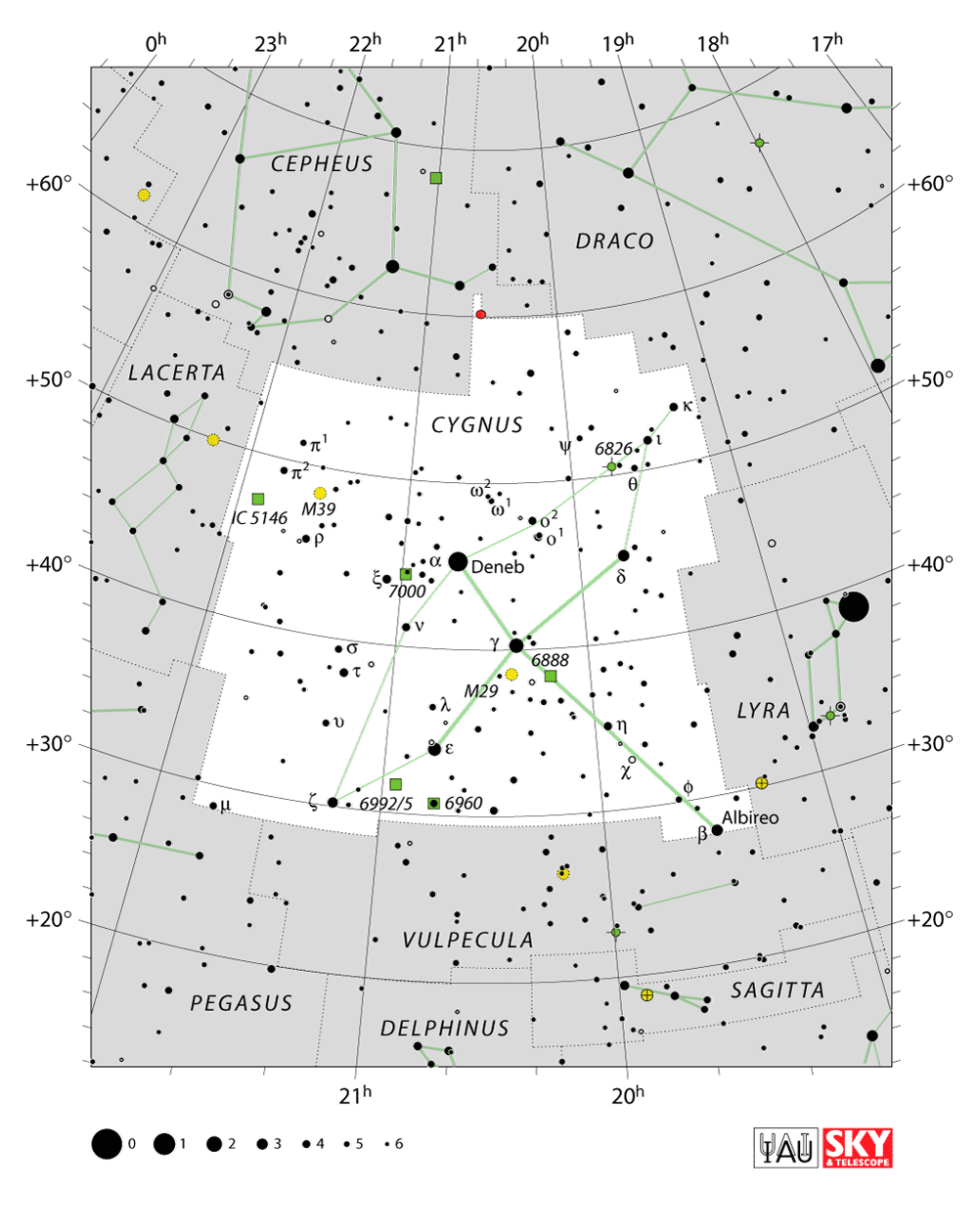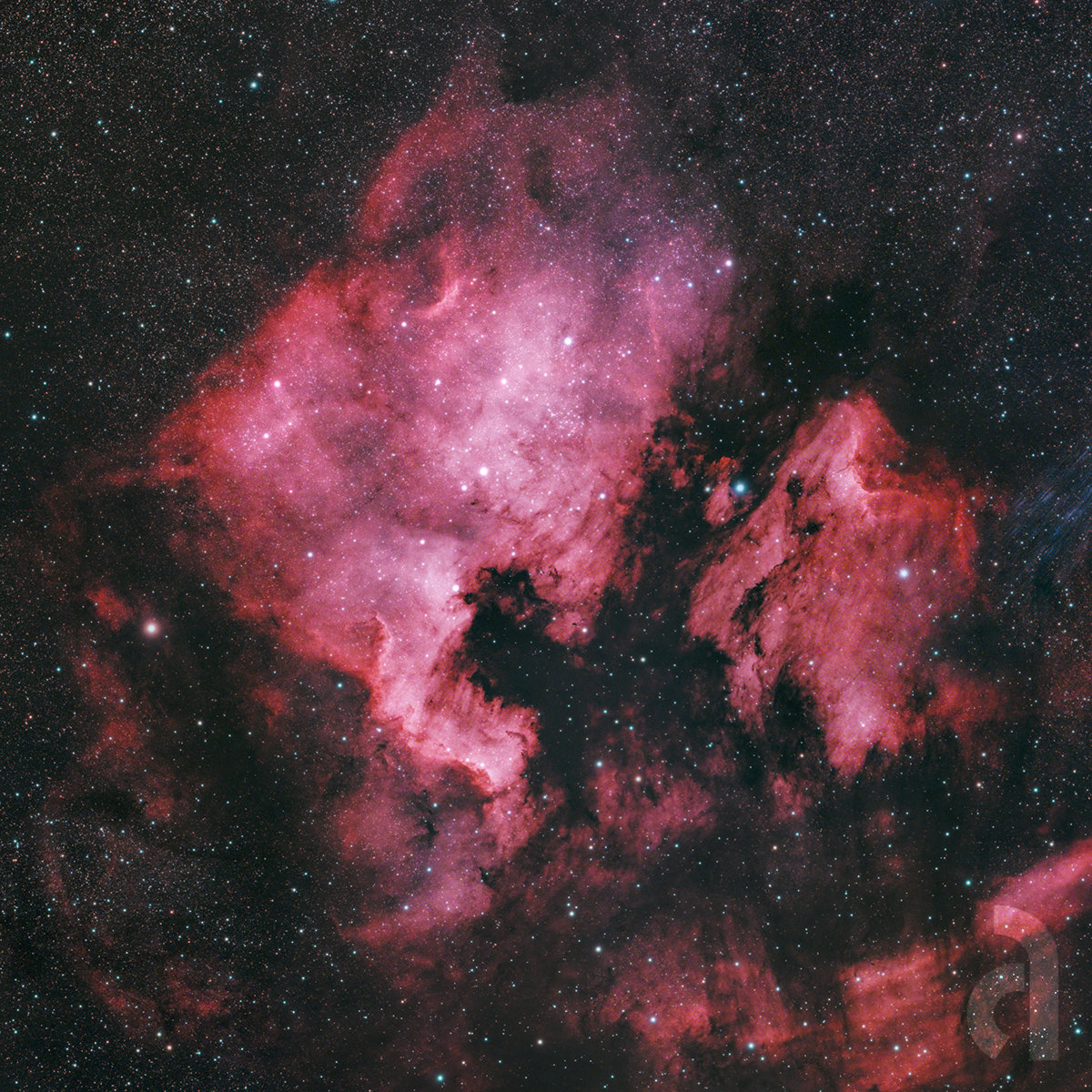North American Nebula
The North American Nebula (NGC7000) is an emission nebula in the Cygnus constellation. The shape of the nebula resembles North America. Deneb is one of the brightest stars in the night sky and sits very close to this nebula. The Pelican Nebula is even closer. In fact they are often photographed together.
Specifications:
Designation: NGC7000, C20
Known As: North American Nebula
Apparent Size: 2° x 30′
Magnitude (lower is brighter): 4.0
Distance from Earth: 1,900 LY
Large, Nine-Pane Mosaic
The image above was taken in a Bortle 6 sky using the ZWO Duo-Band Filter. It is a mosaic of nine images stitched together to form one giant image. This was needed because the nebula is much larger than the field of view of my telescope.
EQUIPMENT
Telescope: Apertura 60EDR
Mount: Skywatcher EQ6R-Pro
Camera: ZWO ASI533MC Pro
Guiding: ZWO ASI120MM Mini
Brain: ZWO ASIair Pro
Filters: ZWO Duo-Band Filter
ACQUISITION
Integration Time: 2 hours
RGB: 24 x 300sec
BIN: 1×1
Gain: 110
Temperature: -10° C
Bortle Scale: 6
CALIBRATION
Darks: 10
Flats: 30
Dark Flats: 30
Offset/Bias: 30


The Cygnus Constellation
The Cygnus constellation is one of the most interesting areas of the night sky with multiple deep-sky objects including the Eastern Veil Nebula.
The “Swan” prominently moves across the night sky during the summer and into fall, in the northern hemisphere. The brightest star is Deneb, which marks the tail of the swan, while Albireo its head.
Cygnus also is referred to as the “Northern Cross.” It contains six bright stars that form a “cross”. Deneb is one of the three stars found in the Summer Triangle, along with Vega and Altair.

SHO Hubble Palette
In order to pick out the details even more, I converted the above image to the “Hubble-style” color palette. This is technically missing the sulfur data, so a replacement was added by merging the OIII and Ha channels.

Available Merchandise
Use the Order Form to request prints or merchandise. (I accept Venmo or CashApp.)
*General information regarding constellations, galaxies, nebulae, and planets have been sourced from: AstroBackyard, VisibleDark, Wikipedia, EarthSky, and NASA.

